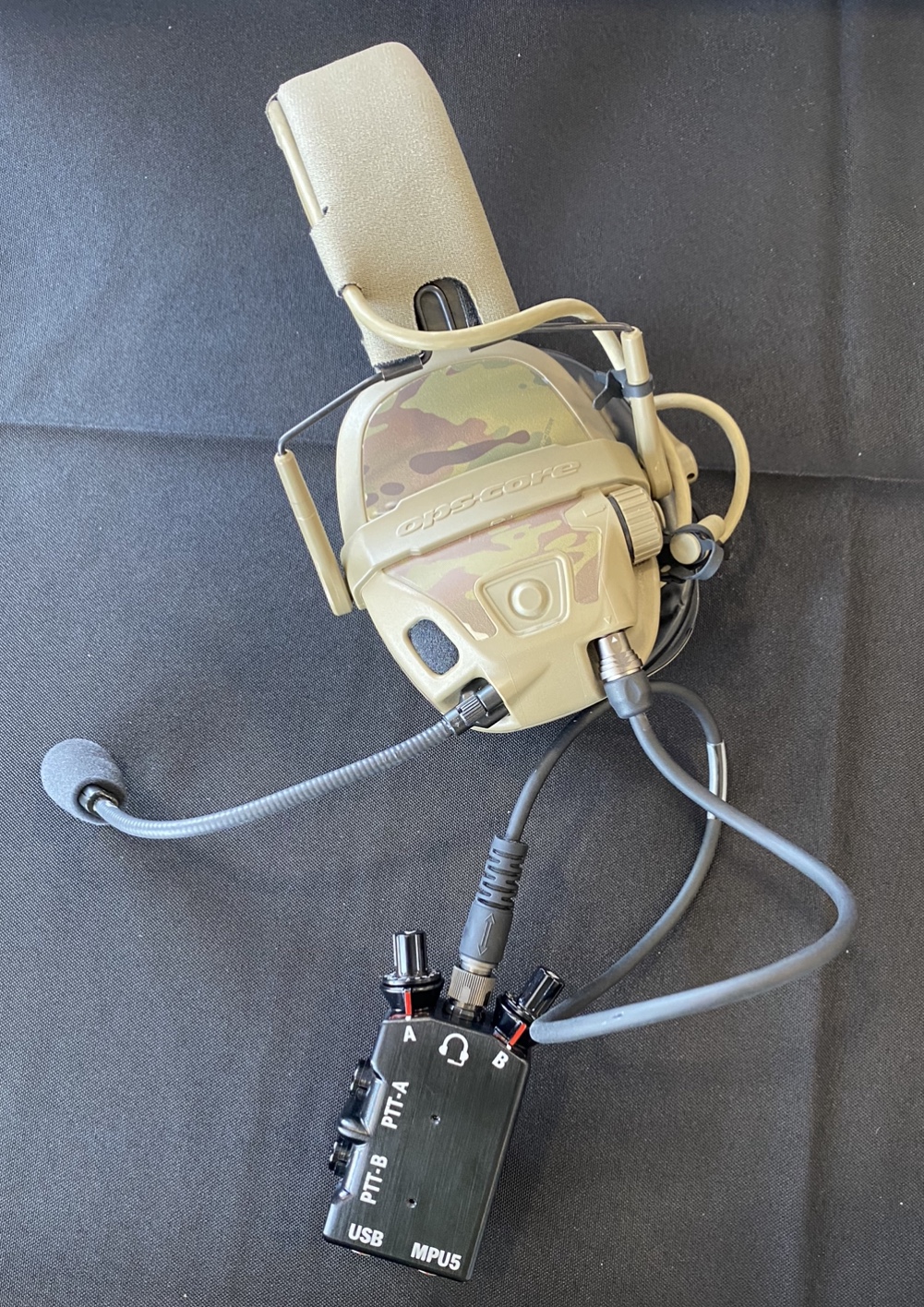
There’s lots of new stuff on the horizon from Gentex’s Ops-Core line but one item that has garnered a lot of interest is the new AMP Communications Headset PTT built for use with the Persistent Systems MPU5.

There’s lots of new stuff on the horizon from Gentex’s Ops-Core line but one item that has garnered a lot of interest is the new AMP Communications Headset PTT built for use with the Persistent Systems MPU5.
OFFUTT AIR FORCE BASE, Neb. (AFNS) —
The 55th Communications Squadron recently met all objectives required by the Air Force to be redesignated as the 55th Cyber Squadron.
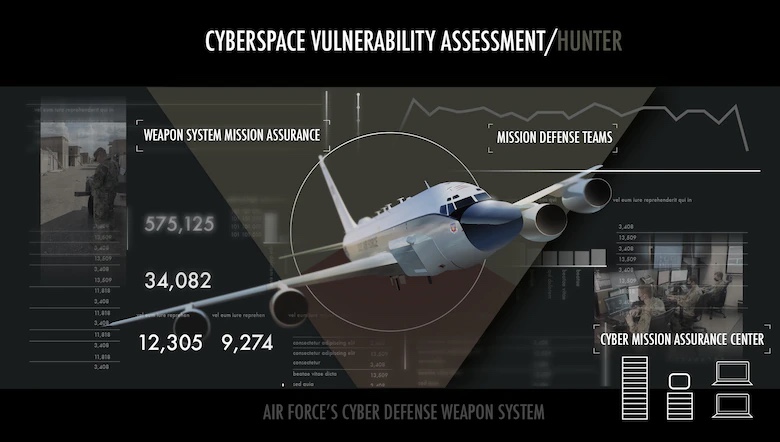
The redesignation indicates the squadron will add a new Mission Defense Team to its overall capabilities while continuing to maintain their legacy mission.
“I’m so proud of the unit and our amazing Airmen,” said Lt. Col. Christopher Wong, 55th CS commander. “We have accomplished all of this through COVID, with a huge deployment burden and the transition to Lincoln.”
For the unit’s Airmen, the redesignation means they are not only responsible for ensuring the installation’s communication infrastructure is protected, but they are also now proactive cyber defense operators on the Air Force’s tactical edge.
“One of the major hurdles that we had to overcome was shifting our mindset from a maintenance to an operational perspective,” said 2nd Lt. Jeffrey Cruse, 55 CS Cyber Defense Flight commander. “No longer is our primary focus customer issues or general system maintenance, but instead we are thinking about ways to engage near-peer adversaries and defend our mission critical networks and infrastructure.”
The unit’s redesignation to a cyber squadron comes only after it met four phases outlined by the Air Force. They include maintaining the unit’s current mission, declaring Initial Operating Capability on its new MDT mission, implementing Enterprise IT-as-a-Service, and having the wing commander recommend the redesignation to the unit’s major command.
By continuing its legacy mission and with the implementation of EITaaS at Offutt Air Force Base in 2020, the unit had to mostly focus its efforts on ensuring its new MDT mission met all of its IOC requirements to make the transition a reality.
“Due to some very unique circumstances here at Offutt (AFB), our squadron was in an advanced position, which enabled us to be a front running cyber squadron and MDT organization,” Wong said.
This included adding specific cyber equipment, tweaking the unit’s manning document, qualification training, and the development of unit specific defensive tactics, techniques and procedures.
“We had to put in place so many new processes and procedures and completely change the way we do business, not just within the team but within our entire squadron,” Cruse said. “As for the operators, once things got moving along they were fully bought in and on board. They had been working and waiting for so long to finally get connected to a system and apply their skills. Once we were able to make our first connection, it was game on for them.”
The unit focused heavily on building a robust operations training program early on in the process and that paid off in the end.
“We’ve put more people through the initial qualification training and mission qualification training pipeline than any other squadron in the Air Force,” Wong said. “We’ve done that just over the past four months and in fact, we’re looking to double that number here soon.”
As part of this redesignation, the unit is further integrating itself into the wing’s operations environment. This includes allowing its Airmen access to the RC-135’s ground and onboard systems for the first time ever.
“One of our main tasks now is RC-135 mission assurance,” Wong said. “To that end we have established an officer exchange program with the 55th Operations Group, we’re now on the jet, flying with them, and all of these are major efforts to help us get to RC-135 mission assurance.”
“Our cyber warriors are proving to the ops world that cyber deserves a seat at the table and play a critical role in their missions,” Cruse added. “What this means for the wing is that we now have a robust capability and way to provide defensive cyber forces to the fight and ensure the unique mission set of the RC-135 and its variants can provide their ISR [intelligence, surveillance and reconnaissance] capabilities to the nation.”
Along with meeting all of the criteria for the redesignation, the unit also underwent some internal restructuring. They have consolidated all battlespace activities under the new Information Technology Support Flight, defined a distinct Operation Support Flight, and changed the name of the Cyber Protection Flight to Cyber Defense Flight.
“We want to employ each individual’s technical expertise and talents to get after the mission set,” Wong said. “This will be key when we start engaging nation states as they will have to rely on those critical-thinking abilities in order to plan, execute and operate in those environments.”
While the unit continues to adapt to its changing mission, the leadership team said this transition wouldn’t have been possible without an array of base agencies who support the 55th CS mission.
“We have a great relationship with all of our mission partners,” Wong said. “The reason all of this has worked is because we have made a huge effort to build strong, positive relationships.”
55th Wing Public Affairs
Sometimes at a trade show you zig instead of zag? and when I turned left instead of right on my last say at DSEi I ran smack dab into the Intelligent Textiles Limited stand and their Molliflex cables.
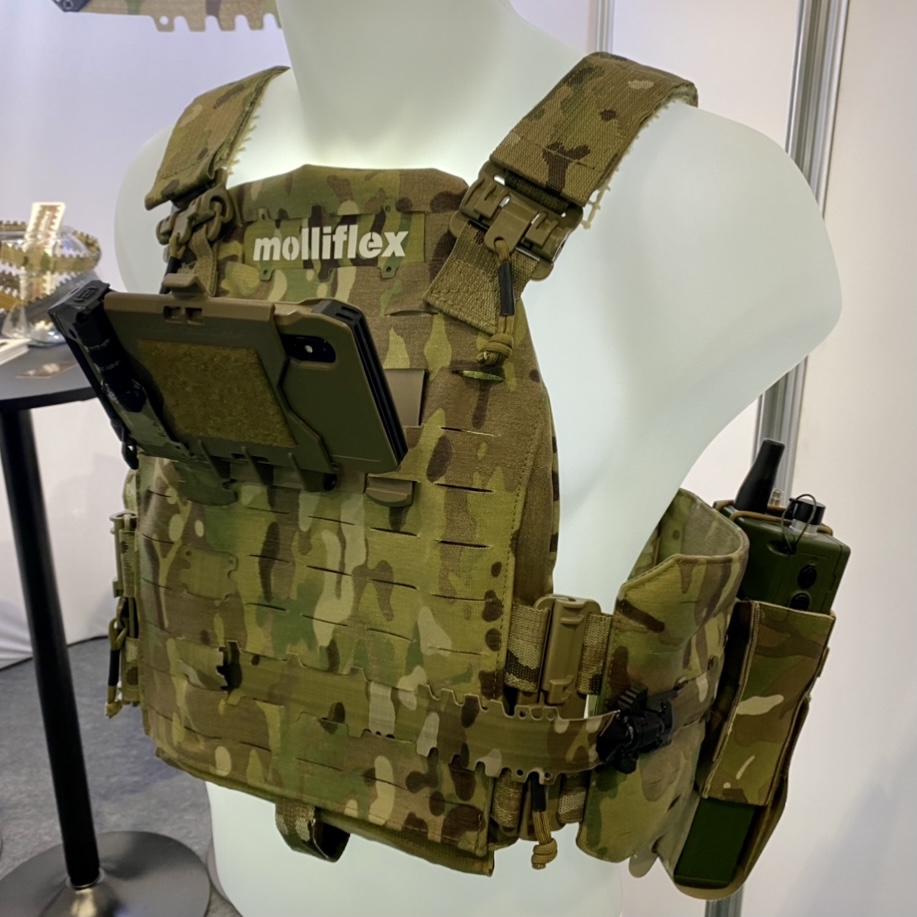
The lady in the stand read my badge aloud, “soldier systems” and as she did it I looked at what they were doing and replied?, “you’re right in my wheelhouse.” Turns out, this is the gem I was searching for at DSEi, that one product I didn’t expect to find, but has great potential.
They’ve done such a good job with their Molliflex cable, that you probably didn’t even notice it in the photo at first or maybe even second glance.
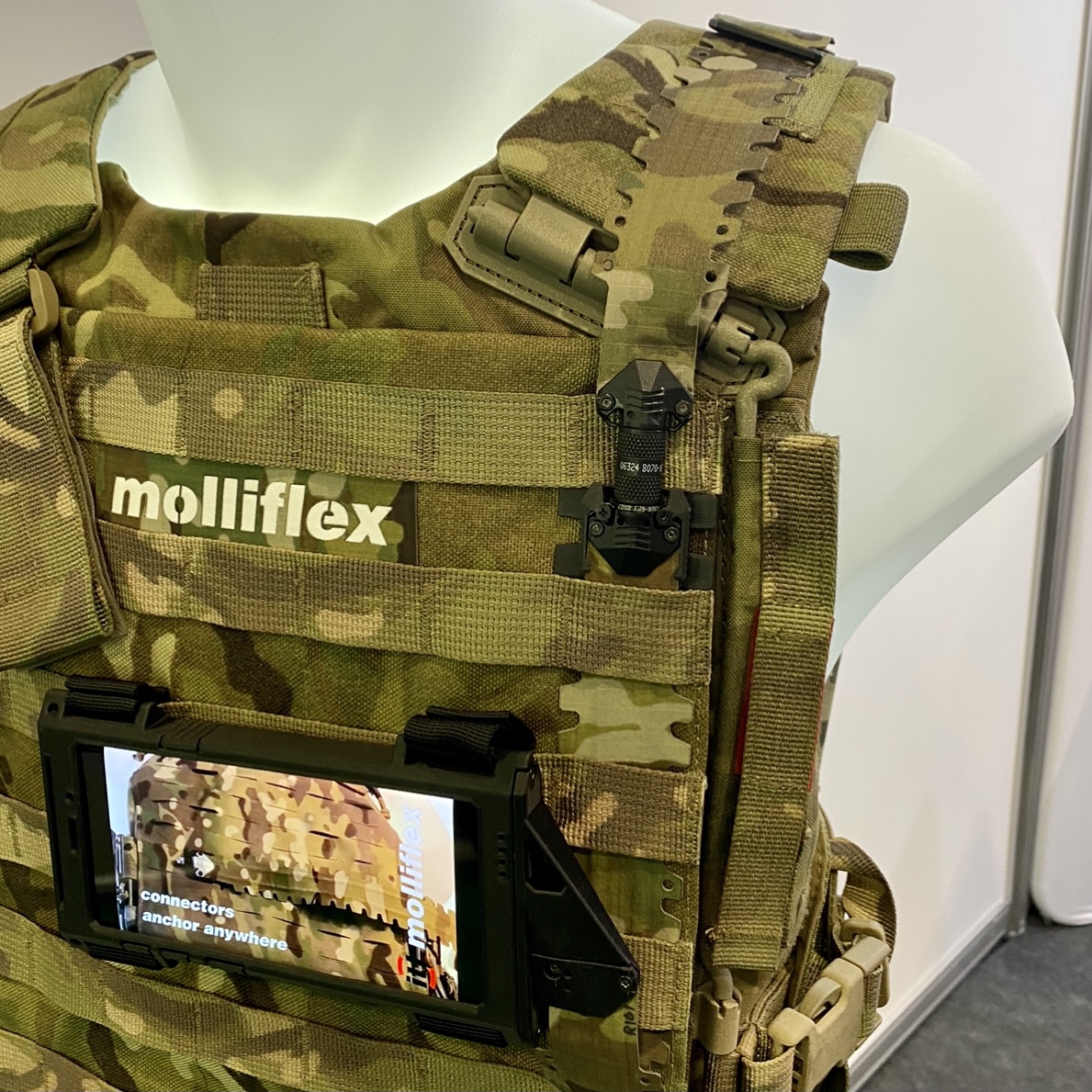
The cable is just 2mm thick and can be woven into PALS compatible platforms. Due to how things it is, pouches can be added over Molliflex. Molliflex lays flat even when folded for 90 degree turns. In fact, it can be folded over two million times before the internal connection is broken. Additionally, it is IP68 rated. The connector is a standard Glenair Mighty Mouse which is Nett Warrior compliant.
Attachments to devices include an Ejector QD plug and Hardpoint attachment plate.
It is rated for power at 5amps,<50voltsDC1 and data at USB 2.0, 480 Mbps.
The outer material is DWR coated nylons me available in Multicam, Coyote, Flecktarn, CADPAT, and Black.
You may have run across AMNB on Instagram or the Web where he reviews a wide variety of kit, primarily for the Mil-Sim community. We’ve hit the point where the quality of products designed for Mil-Sim are getting up there. I’m not saying for professional users to go this route, but it may have utility for some readers.
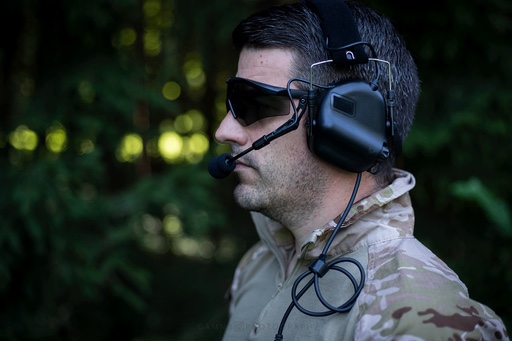
CR-TAC from codeRED Headsets is a noise cancelling Dual Muff headset with “hear through” technology using electronic amplification of ambient sounds.
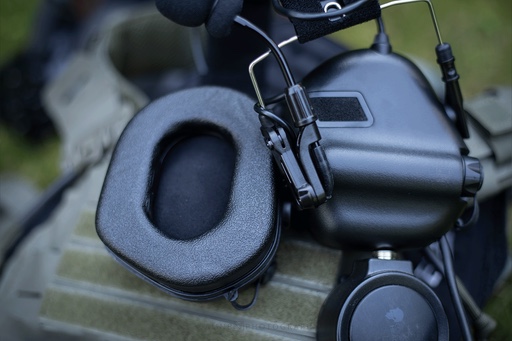
Overall, his impression is very positive, but Chris goes into some detail, which makes it worth your time to go read what he’s got to say.
For the whole review at airsoft-milsim-news.com/codered-cr-tac-headset-amnb-review.
• New radio service to boost communications across multiple terrains and domains
• Investment will improve interoperability and enhance emergency communications
• Multi-million-pound contract to support 150 UK industry jobs

A £110 million contract has been awarded to deliver the new Defence Strategic Radio Service (DSRS) to critical military operations.
DSRS uses the Earth’s ionosphere, part of the upper atmosphere, to allow radio signals to be sent and received across thousands of kilometers. This allows communications to be rapidly delivered across a variety of domains to service personnel, regardless of whether they are on land, in the air or at sea.
The new communications service removes the traditional requirement for direct-line-of-sight between the transmitter and user. Members of the Armed Forces will be able to communicate more effectively and quickly in notoriously challenging terrain, such as built-up cities, mountains and jungles.
Awarded to Babcock International Group, the nine-year contract will support around 150 jobs across England, Scotland and three of the UK’s Overseas Bases.
Babcock Chief Executive David Lockwood said:
“Babcock is delighted to be awarded the new Defence Strategic Radio Service contract which builds on our extensive experience and knowledge in this field. In collaboration with both our partners and customer we will work together to deliver a secure, resilient and advanced solution that will ensure DSRS users receive assured services, in support of the critical operations they perform, that are fit for today and ready for tomorrow.
“We are proud to continue our drive to ensure that high frequency (HF) skills and capabilities are maintained in the UK, both now and into the future, through our unique HF Communications BTEC apprenticeship programme.”
Defence Secretary Ben Wallace said:
“This multi-million-pound investment in frontline radio communications will provide our Armed Forces with cutting-edge technology that allows them to connect effectively across a range of challenging environments.
“Underpinned by commitments outlined in the Defence Command Paper, industry expertise will be at the core of developing this innovative capability whilst supporting more than 150 jobs in the process.”
Outlined in the recent Defence Command Paper, the MOD is committed to ensuring that innovation and investment are at the forefront of the Armed Forces giving them a cutting-edge advantage whenever and wherever they are deployed. This is further enhanced by the £24 billion increase in Defence spending over the next four years, as announced by the Prime Minister last year.
Commander of Strategic Command General Sir Patrick Sanders said:
“It is vital we have a range of robust communications options available to us, including satellite, internet and high frequency, to offer Commanders and decision-makers in the field the information they need at the speed of relevance.
“As we see a continued rise in threats to our security in the cyber and electromagnetic domain, our network resilience is what will give us the competitive edge against our adversaries.”
The new system will also be critical for flight safety communications to all military aircraft while also supporting the ‘mayday’ fallback facility for the wider UK aviation community.
While used by the UK Armed Forces, the radio system will also support civilian tasks when required, including mountain rescue and civilian aircraft emergency communications.
DSRS works across all single Service capabilities and can be integrated with communication systems of global allies, improving the UK’s ability to command and control its forces worldwide.
Joint readiness exercise utilized MANET to connect distributed units in simulated fight against near-peer power.
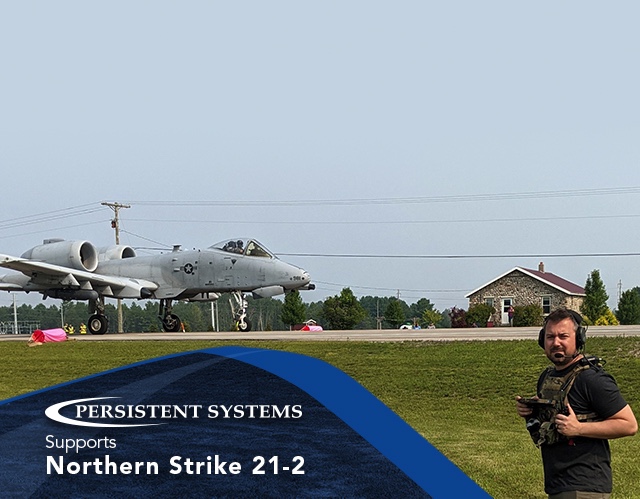
NEW YORK, N.Y. – Persistent Systems, LLC (“Persistent”), an industry leader in mobile ad hoc networking (MANET) technology, announced today that it successfully supported Northern Strike 21-2, the U.S. National Guard’s largest joint service readiness exercise.
During the exercise, which was hosted at Michigan’s sprawling National All-Domain Warfighting Center (NADWC) earlier this month, Persistent’s Wave Relay® MANET solutions enabled multi-service reserve, Guard, and active-duty U.S. military participants to practice fighting a near-peer adversary in a distributed, small-unit fashion.
“Our technology facilitated the fusion of existing systems and datalinks—such as MQ-9 video, Link-16, P25 digital radio communications equipment, and land mobile radio—into one rapidly deployable all-domain network,” said Adrien Robenhymer, Persistent’s VP for Business Development, for the U.S. Air Force, Intelligence Community and the Department of Energy.
The NADWC network allowed, for example, small-unit teams in austere threat environments to communicate with A-10 aircraft pilots to coordinate close air support missions. Likewise, it enabled Air Force All-Domain Combat Teams landing by C-130 to deliver high bandwidth updates back to a headquarters unit thousands of miles away.
“We’re not in the business of developing technology, but we have this opportunity to collaborate, test and collect data at the National All Domain Warfighting Center. Our training audiences come to NS for their own purposes, and so do these industry partners,” said Brig. Gen. Bryan Teff, assistant adjutant general for air, Michigan Air National Guard. “Whether it’s early development, late maturation, getting warfighter feedback on their capability, or perhaps they’re already being used by the DoD and want to better understand the end user experience, we want all this technology, integrating with the warfighter at NS to improve readiness for the future operating environment.”
Robenhymer said Persistent’s support of Northern Strike 21-2 was a scaled-up version of the roles the company played in other recent demonstrations. For example, in May, Persistent showed how, in the wake of a devastating hurricane, its MANET solutions could help the South Carolina Air National Guard reestablish internet, radio, video, and chat for response units.
Likewise, in March, Persistent supported the U.S. Air Force’s Agile Combat Employment (ACE) concept, which aims to counter the near-peer threat to large air bases by having U.S. forces operate from smaller, rapidly deployable, temporary airstrips manned by skeleton crews.
“We are constantly looking at ways to demonstrate the power and versatility of MANET, how it connects people and improve their situational awareness when normal communication channels fail,” he said.
Galvion, a world leader in the design and manufacture of military power management solutions, with operationally proven pedigree in NATO countries, has released three new key products as part of their integrated Active Systems capability that facilitates the harvesting, distribution and management of dismounted soldier power, data and software. The announcement coincides with the DSEi exhibition taking place in London, 14-17 September 2021. At the show, Galvion will also be exhibiting their range of next generation head systems and Li-ion platform power solutions on stand H1-424.
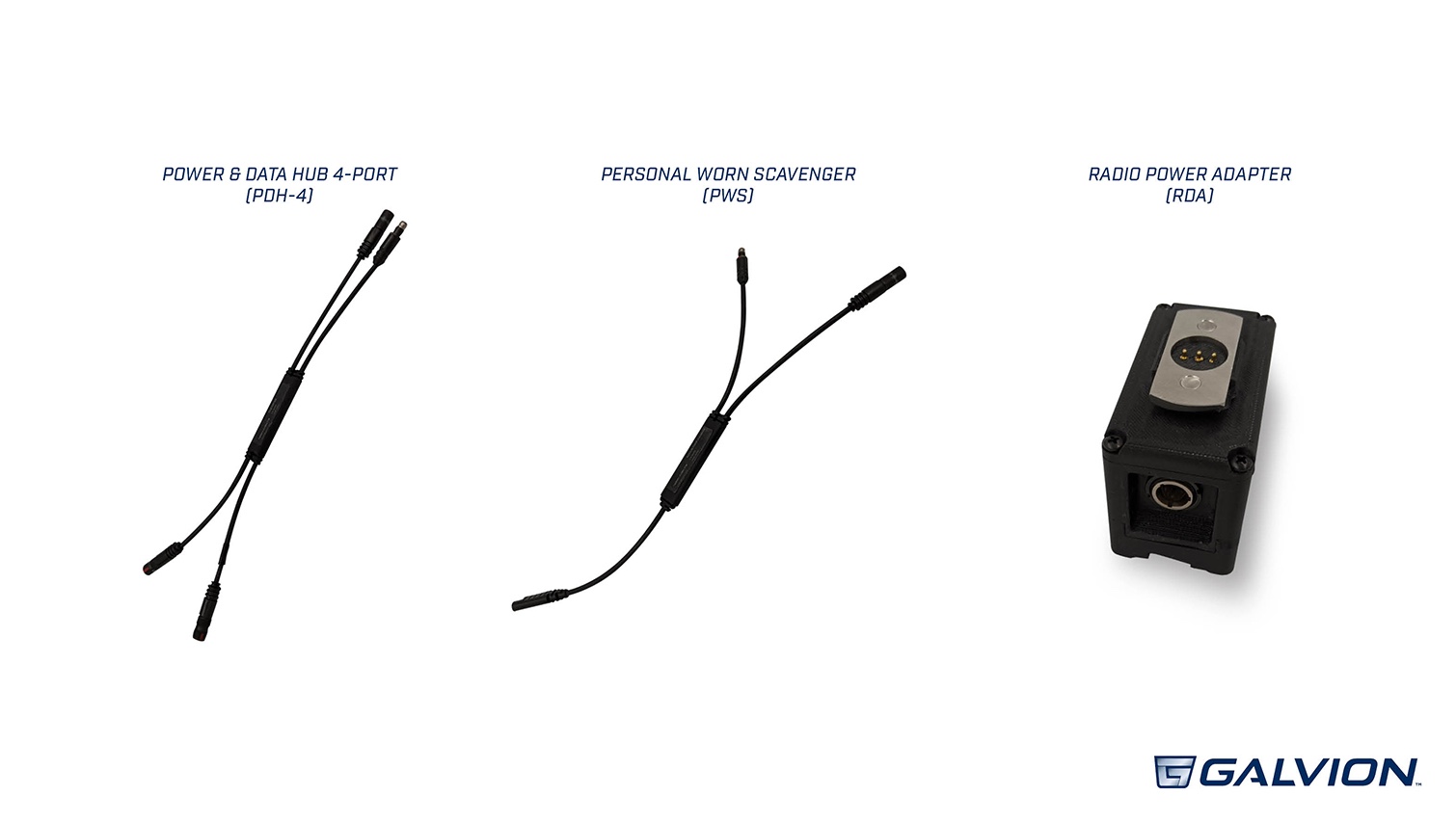
To be mission effective, the modern soldier is required to carry, operate and maintain a host of devices that all demand significant power and data capacity – for example radios, NVGs, GPS, smart phones, laptops, drones and other surveillance equipment. Galvion has released three new products that integrate with their existing soldier power systems, to better support the dismounted soldier in managing these increasing technology demands. These products are flexible, scalable and comply with US NettWarrior and NATO STANAG 4695 standards for backward compatibility, ease of integration with other product ranges and improved logistic sustainability on the battlefield.
The Power and Data Hub 4-Port (PDH-4) provides a multi-function power and data connection between the basic soldier-worn architecture, such as hand-held radios and smart devices, and a suitable power source. The PDH-4 enables the soldier to send and receive data through the connection with the soldier worn devices, increasing situational awareness through system integration. When combined with the PWS it maximises the distribution and use of harvested power sources and is ready for the soldier’s future data sharing demands and software updates.
The Personal Worn Power Scavenger (PWS) provides a highly adaptable interface to allow the soldier to harvest power from multiple sources such as solar panels, 12V systems, mains power or other squad or personal power sources such as SoloPackTM. The PWS can be used in isolation or combined with other products, such as the PDH-4, to increase utility and the number of devices that can be charged.
The third new product, the Radio Power Adapter (RPA), easily integrates with most common hand-held radios in use today. This adapter provides power to the main radio battery by connecting to a main soldier-worn power source and keeping it charged and ready for when the radio is disconnected from the soldier-worn architecture. The Radio Power Adapter supports the AN/PRC-148 MBITR, Falcon III AN/PRC-152A and the AN/PRC-161 Link-16. The RPA also reduces the number of radio batteries a user needs to carry and fits into their existing load carrying system.
Kristen Lomastro, President of Active Systems, said: “Galvion has been leading the way for soldier power management and distribution systems with their NervCentr® products and I am extremely pleased to announce the release of these three new products to augment our dismounted soldier capability. With their small form factor, these products easily integrate into existing soldier-worn equipment and are compatible with other soldier systems. They also provide the hardware infrastructure to support our mission-enabling software making them future-ready. Galvion always places the soldier first, and we pride ourselves on designing solutions that help to protect and support those who protect us.”